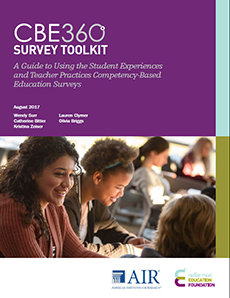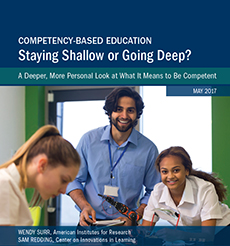Postsecondary Pipelines│College and Career Readiness and Success Center

States and districts can support successful transition from secondary to postsecondary education and career pathways by ensuring academic standards are meaningful for all students and aligned with postsecondary entrance requirements. The following resources from the CCRS Center highlight some strategies such as competency-based education that states and districts can consider ensuring students are ready for postsecondary success.
Key Postsecondary Pipelines Work
 CBE 360 Survey Toolkit
CBE 360 Survey Toolkit
The CBE 360 Survey Toolkit, developed by AIR with support from the Nellie Mae Education Foundation, uses surveys from an AIR CBE study to provide a comprehensive picture of CBE implementation in six research-based core areas: learning targets, measurement of learning, instructional approaches and supports, assessment of learning, pacing and progression, and when and where learning takes place. Users can then identify areas of strength and need in order to realize the full potential of CBE.
 Competency-Based Education: Staying Shallow or Going Deep?
Competency-Based Education: Staying Shallow or Going Deep?
In order to be successful in the 21st century, students will need to master an expanded set of competencies that extends beyond discrete academic standards. Competency-based education focuses on mastery of these competencies—rather than seat time—as a measure of student learning. This brief explores how states and districts can define learner competencies that reflect the full range of knowledge, skills, and dispositions necessary for students to achieve college and career readiness.
